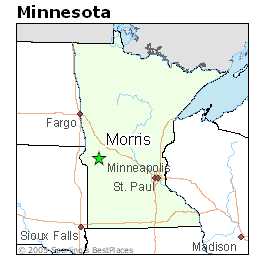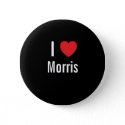It has been just over four years since Maynard Ferguson left us. Maynard was not only an amazing musician, he was an amazing human being who was happy traveling and performing anywhere. He showed the spirit of the Vaudevillian. He was delighted to have an audience and never tired of it.
The last time I heard Maynard, he played in Dawson, Minnesota, the type of (with all due respect) out-of-the-way hamlet that often turned up on his itinerary. Maynard probably didn't have to travel to make a living or be fulfilled as a musician. The lifestyle was probably ingrained in him when young, when "big bands" were still defining the mainstream of popular music, and traveling was an assumed part of their mission.
Today's young people wouldn't feel that allure. There was a time when there was nothing more "cool" for a college-age musician than to join, say, the Stan Kenton orchestra, climb on "the bus" and share music. An important part of Ferguson's resume was when he was up-and-coming with Kenton.
I feel affection for Kenton especially when remembering his piano introduction to "What Are You Doing for the Rest of Your Life" - remember, "north and south and east and west of your life?" Sometimes he'd play a little cat-and-mouse game with the bass player during that intro.
Kenton developed the type of penetrating brass sound that would become a model for Maynard's groups. There was a brethren feeling, and none of us fans can deny that we have fantasized being able to play that way ourselves!
The Kenton band was especially large during much of its history. It afforded a platform for up-and-coming musicians. I remember hearing the Kenton band in Willmar and St. Cloud in the 1970s. Kenton seemed to be riding the coattails of past success and didn't have the most polished unit. I'm sure many of his audience members had been "turned on" to this type of music by Maynard and just wanted more.
Maynard made a name for himself even while playing with Kenton. He played on TV with Kenton when TV was just into its infancy. That primitive looking video is priceless now.
The big band "survivors" during the 1970s were a unique group that had infectious popularity with kids, many of whom no doubt felt themselves "nerds" (until that term became antiquated as it became clear that "the nerds won"). These were baby boomer youth.
A critic once poked fun at the boys as always wearing corduroys. (This was after a concert at the old Met Center in Bloomington.)
We were wowed by the talent onstage.
Buddy Rich, who had been literally groomed in Vaudeville, led a very popular band from his drum set. Woody Herman was one of the true big band leaders from the 1940s heyday of the genre, and he stayed at it through advanced years and some decline in health. Why the perseverance?
"He owed people money," it was learned
But I don't think the musical commitment was drudgery for Woody, as I think all these guys felt a deep, inherent motivation to share the energy of the big band sound. At its best the sound is just as electric and exciting as rock and roll and its pop descendants.
Woody made the transition in tastes beautifully, and perhaps he was the most underrated of the group.
The Glenn Miller and Benny Goodman sounds seemed archival and "not hip." One reason was the restrained bass line. Their rhythm sections (with some notable exceptions like Gene Krupa on drums) tended to stay in the background.
A heavy sense of rhythm might have been troubling to a generation that later would make rock and roll controversial until finally the lid couldn't be kept on anymore.
There were racially-colored undertones to that restraint. The multiculturalism that took root in the late 1960s, spurred by Woodstock, eroded the barriers. Maynard, Stan, Woody, Buddy and Count Basie brought together the best of the old and new. There was the unbridled joy of a powerful, in-sync section of brass, the reliable saxophones and a powerful rhythm foundation that could appeal to boomers who had vinyl record collections full of rock. (You can tell I'm a trumpet player by how I refer to the sax players as merely "reliable." Ha!)
The term "jazz rock" came to be popular. "Fusion" was also heard. But it was just well-conceived music, resonating from that endless process of musical evolution.
Basie was a real jewel but he probably endeared himself more to boomers through his appearance in "Blazing Saddles" than anything. He was an African-American keyboardist and tireless leader. I heard his band in St. Cloud on a night when he couldn't be present due to health. Nat Pierce sat in for him at the piano and led.
I was pleased to interview Nat prior to the concert for an article in the St. Cloud State University Chronicle. Trumpeter Lin Biviano and drummer Butch Miles were highlight performers on that memorable night at Stewart Hall (an auditorium now named for Kimberly R. Ritsche.) My journalism was truly secondary to the music.
(I also gained appreciation of the fact that when you're a journalist, "you get in free!")
Buddy Rich was the kind of unique stylist one would expect as a product of Vaudeville where performers lived their craft from a very young age - something we don't see in the same way today.
Maynard absolutely mesmerized a certain segment of the young jazz audience. I remember him playing twice in Morris, both times at the UMM P.E. Center. The sound was powerful, tight and efficient with a rhythm section that could stand on its own.
Boomers demanded strong electronic amplification in the 1970s, and Maynard had no aversion to this. I remember hearing the MF band in Willmar in the 1970s when the amplification seemed overdone. I remember hearing him in St. Paul at that same time when the young and boisterous crowd got carried away and began detracting from the artistry.
Boomers had their sillier moments which they would now prefer to forget, especially when trying to set an example for their own children. Pssst, you children, your parents could be baboons!
Us baboons filled the St. Paul Prom Center for Maynard concerts three or four times a year. Alcohol was served to adults.
DWIs were uncommon and weren't the kind of seeming death sentence they are today. I remember hearing Buddy Rich's band at Orchestra Hall in Minneapolis when alcohol was served in the entry area. Alcohol seemed necessary to accompany jazz. Of course it wasn't. It was just a cultural norm.
I remember Buddy drawing a roar of laughs when he came forward at Orchestra Hall, gazed around and said "Isn't it something what they've done to the Prom Ballroom?"
Well, what they've done to the Prom Ballroom since then, is subject it to the wrecking ball. The Prom was like a much larger version of the old Lakeside Ballroom in Glenwood. Boxing matches were held there. High school and college age musicians used to line up at the door for Maynard concerts, ready to charge in like an advancing army. When inside we turned the little ashtrays into frisbees. Remember, you children, this was not an example for you to follow.
Maynard was renowned for bringing music to colleges. He got a formal award for this late in his career. He came to symbolize jazz education and spoke much of it, but mostly he just performed a type of music that was infectious for young musicians who were seeking to escape the stuffy restraints of "concert band."
Ironically, Maynard himself was a dropout from school! At age 15. The Montreal, Canada, area native plunged into music. He came to the U.S. in 1948 when the traditional big bands were still invigorated.
Maynard was featured in a Charlie Barnet band recording of Jerome Kern's "All The Things You Are." Kern's widow was furious at the unconventional treatment. You see, Maynard was a high-note trumpet artist. Jazz fans loved it but there was a generational rift that found no compromise. Maynard was an acquired taste and the widow hadn't acquired it. The recording had to be withdrawn.
Oh, but the times were fading when music had to be gentle, restrained and melodic. Rock and roll arrived like a clap of thunder in the 1950s. There was no turning back. Kids had their transistor radios and more discretionary money with which to buy records.
The 1960s were terrible for big bands. Maynard Ferguson left the U.S. for a time and found a spiritual guru in India. Then came the England chapter in his life. Then he began developing the jazz-rock fusion sound that would define the (commercial) prime of his career.
He returned to North America in 1971 and began his ascent.
Maynard teamed with Bob James in 1976 for a series of quite commercial albums that nonetheless had firm jazz elements. He fronted large groups of session musicians for these recordings. His boomer fans salivated over each new release (those vinyl record days).
The commercial success reached a peak with the cover of "Gonna Fly Now" (from "Rocky"). Through it all, Maynard toured almost incessantly. He came to Minnewaska Area High School (Glenwood/Starbuck). "Flyoverland" was, to him, bus touring land. We thank the Lord that he blessed our musical lives.
His last really solid recording was with vocalist Diane Schuur. I absolutely prize that CD in my collection.
Today Maynard still "screams" in our memories. I doubt that there are any big bands today that inspire the type of "event" feeling that he and his circle of brethren did. Today we are just too surrounded by music. But that heyday of traveling big jazz bands was oh so special.
We were mesmerized by "brassy joy." (And don't overlook those "reliable" saxes!)
Maynard Ferguson, RIP.
-Brian Williams - morris mn Minnesota - bwilly73@yahoo.com
Tuesday, September 21, 2010
Subscribe to:
Post Comments (Atom)























No comments:
Post a Comment